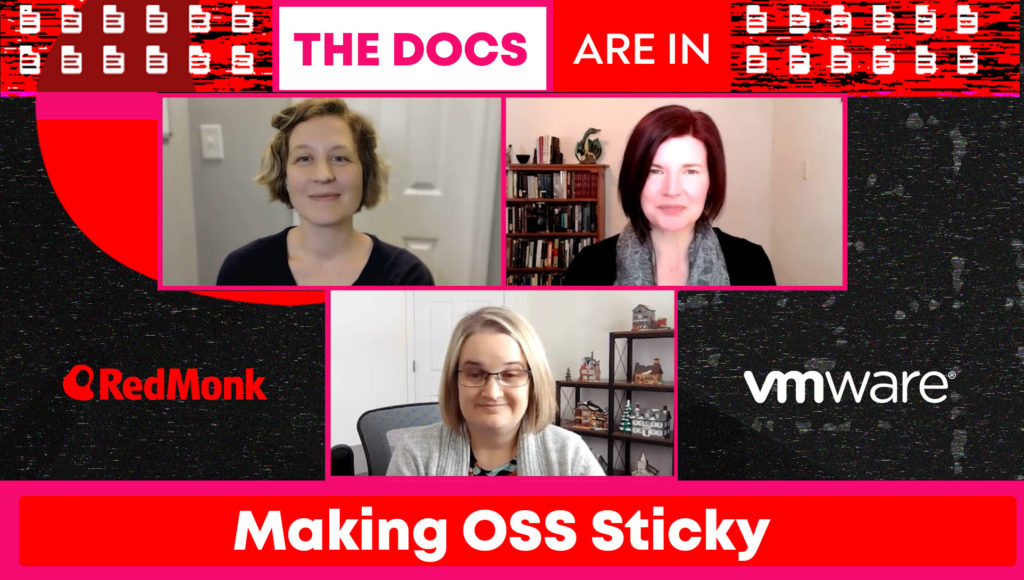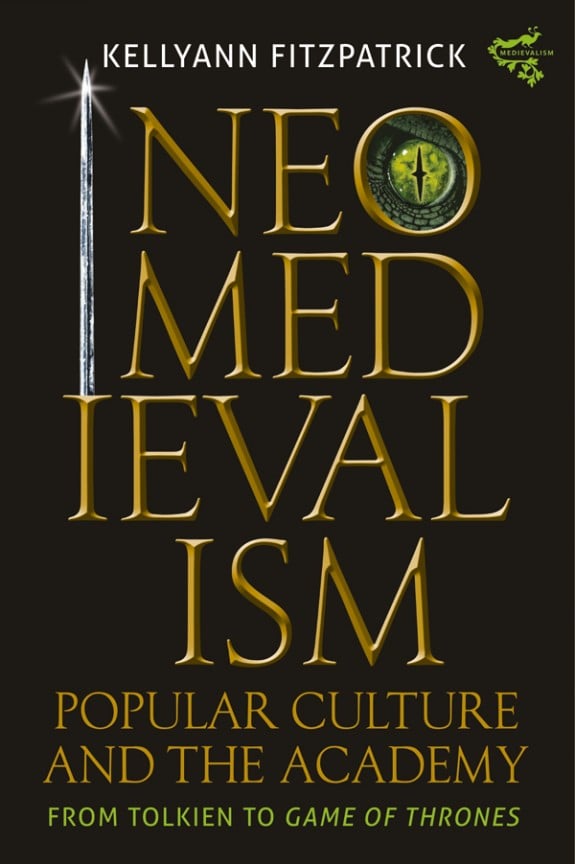
In this The Docs Are In conversation, Kate and I chat with documentarian Alyssa Rock about fostering “stickiness” in open source software (OSS) projects and related communities. The stickiness of a community, as Alyssa defines it, “is about making it so that people want to stay and stick around and make a long term contribution.” Stickiness can be tricky for OSS communities, as many contributors and maintainers participate on a volunteer basis and for a variety of motivations.
Alyssa is herself in a position where her day job–she is a Staff Technical Writer at VMware–includes working on the Salt project, a Python-based configuration tool. Alyssa landed at VMware through its 2020 acquisition of SaltStack, a company built around the open source Salt project. In addition to working directly on Salt documentation, she runs the Salt docs working group. Alyssa is also very active in other projects and communities. She is the Community Manager of The Good Docs Project (which creates processes and templates designed to make it easier for non-professional documentarians to create great documentation) and Coordinator for the Write the Docs Quorum Program. Alyssa therefore has spent a lot of time thinking about (and executing on) ways to onboard folks onto projects, and the role documentation plays in this process.
While documentation per se is often essential to a project and its community, it is also a part of the project that needs to recruit and retain contributors. Alyssa walks through some of the processes she employs specifically to make the documentation components of the projects she works on sticky:
So I’m always working on building out a backlog of documentation epics and a roadmap of what I would do if I had more resources. And because I have that backlog of things that I would do if suddenly I got a lot more people working for me, when somebody does join, I have something for them to look at. I can say, look at the backlog, look at this roadmap, see if there’s any of these projects that interest you, or sometimes I’ll just have an in-depth interview with them and talk about “What are your goals for contributing? What are you hoping to get out of your time here with us at the project?” And I’ll see if I can find a task that matches your needs and what you’re hoping to get out of it, which increases the chance that they’ll stick around because it has some intrinsic value to them.
My sense is that this type of personalized onboarding requires a lot of care and skill on the part of folks like Alyssa, but has the potential for huge rewards in terms of retaining interest (and, to keep the sticky metaphor going, is glue work at its finest). And, as Alyssa points out, one of the key factors is fostering a mutually supportive environment:
What makes the project sticky, I think, is that we’re all supporting each other in our professional goals. We’re all trying to be better. We’re trying to be better writers or better developers or whatever it is we’re trying to skill up with, and we’re all in this together supporting each other.
Indeed, one of my favorite parts of the conversation is when Alyssa talks about how contributors to her projects have managed to leverage that experience (often bolstered by the fact that they are using relevant tools to work on recognized projects) in order to obtain jobs in the tech industry.
Check out the video below for the full conversation (including Alyssa’s background in Film Studies and sojourn into higher education) or see the full transcript and related links.
Disclosure: VMware is a RedMonk client; however, this post and the RedMonk video mentioned in this post were not commissioned by any entity.

No Comments